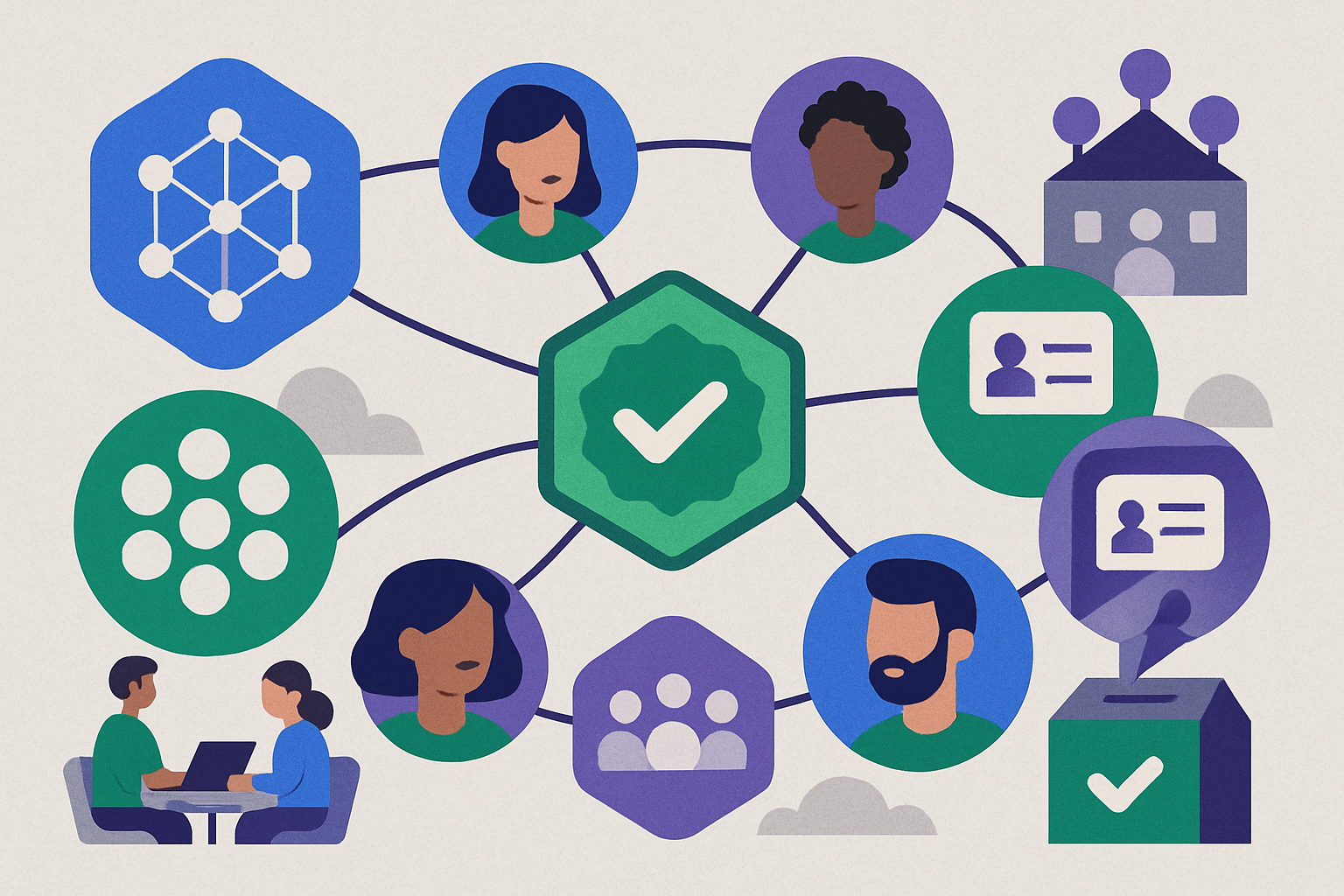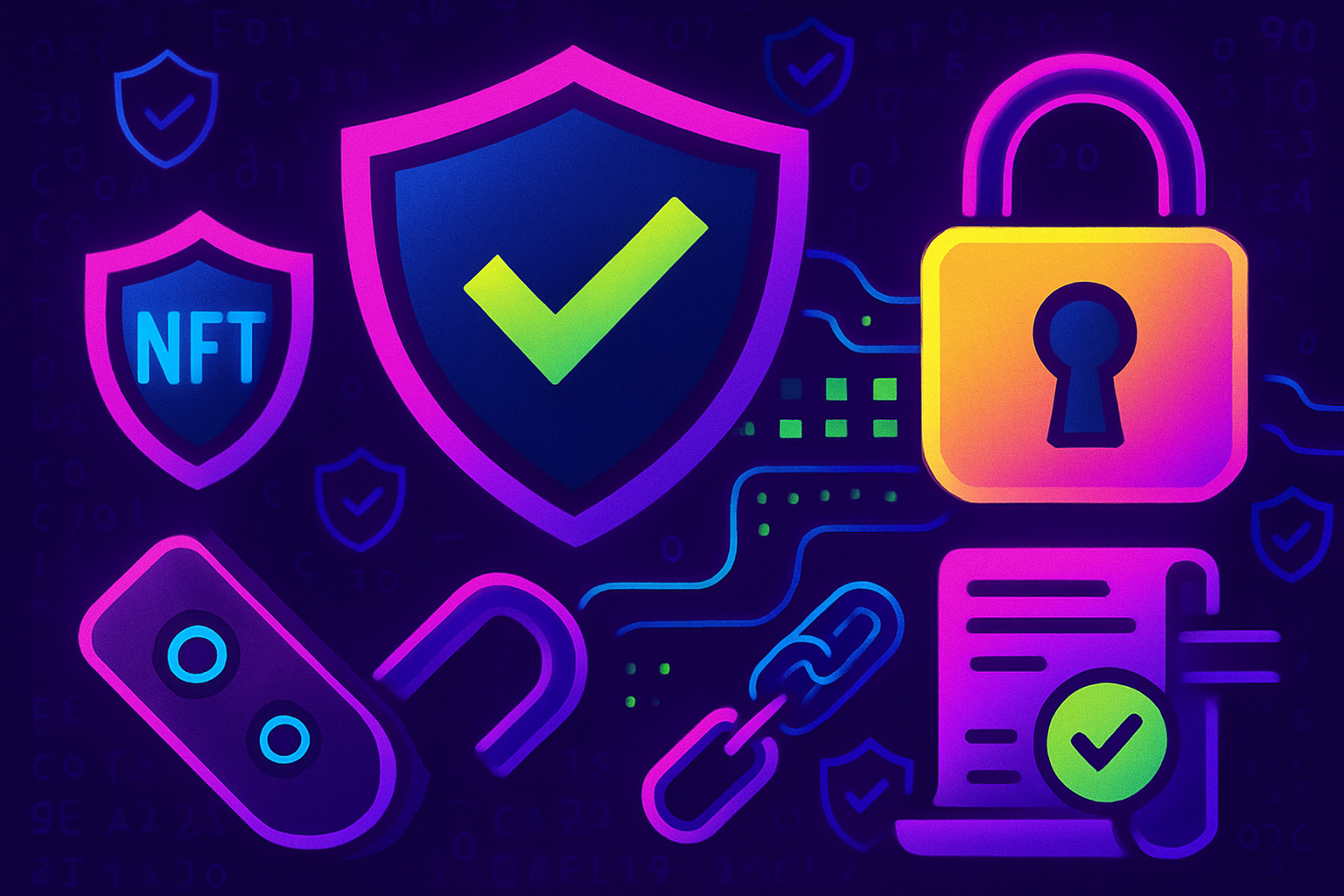
Decentralized Autonomous Organizations (DAOs) are reshaping how communities coordinate, allocate resources, and make collective decisions. Yet as DAOs scale in 2025, a persistent threat looms: Sybil attacks. These attacks, where a single actor creates multiple fake identities to manipulate votes or seize control, remain a critical vulnerability for token-based governance systems. Traditional models that rely on transferable tokens have proven susceptible to such exploits, often resulting in skewed outcomes that do not represent the true will of the community.

Why Sybil Resistance Matters for Modern DAOs
Sybil resistance is no longer an abstract security concern; it is foundational to the legitimacy and future of decentralized governance. In token-weighted voting systems, whales and malicious actors can easily accumulate influence by acquiring tokens or creating multiple wallets. This undermines the very ethos of decentralization and opens the door to vote buying and manipulation, problems that have stymied even high-profile projects.
Recent research from Stanford University and leading DAO analytics platforms underscores that robust Sybil resistance mechanisms are now table stakes for any DAO seeking sustainable growth. In fact, with over 72% of Web3 projects leveraging DAO models as their core infrastructure (source: rzlt. io), the pressure is mounting for innovation in identity verification and participation tracking.
Governance NFT Badges: The New Standard for Reputation-Based Voting
Governance NFT badges are emerging as a transformative solution to these challenges. Unlike fungible tokens, these badges are non-transferable, unique digital credentials issued based on verifiable actions or contributions within the DAO. Each badge is tied directly to an individual’s on-chain identity, making it virtually impossible for one person to claim multiple badges without detection.
This shift from capital-based voting to reputation-based voting fundamentally realigns incentives within DAOs. Instead of rewarding those with the deepest pockets or most wallets, governance NFT badges empower contributors whose engagement and merit drive community progress. The result? A system where influence is earned, not bought or faked.
Key Benefits: How Governance NFT Badges Reinforce Sybil Resistance
- Unique Identity Verification: Each badge is bound to a single verified participant, ensuring one-person-one-badge integrity across all governance processes.
- No Transferability: Badges cannot be sold or transferred, eliminating opportunities for vote buying and secondary market manipulation.
- On-Chain Transparency: Issuance events and voting records tied to each badge are fully auditable on-chain, boosting accountability at every step.
- Dynamically Updated Merit: Voting rights can evolve as members contribute more, aligning power with ongoing participation rather than static holdings.
This architecture directly addresses weaknesses identified in prior quadratic voting experiments and token-governed protocols by making it prohibitively expensive, and technically difficult, for attackers to mount large-scale Sybil operations.
The Mechanics: From Contribution Metrics to Automated Badge Issuance
The process begins with clear criteria for earning badges: active participation in proposals, successful project completion, or sustained engagement in community forums. Leading platforms now automate this process using smart contracts that issue badges upon completion of predefined milestones, removing human bias while ensuring consistency across the board.
Once issued, these badges integrate seamlessly with DAO voting platforms so only qualified members participate in key decisions. Regular audits ensure badge distribution remains fair as organizational needs evolve, a practice increasingly adopted by sophisticated DAOs aiming for long-term resilience.
If you’re interested in practical strategies for implementing these systems at scale, including real-world case studies, explore our deep dive on how DAOs use NFT badges for Sybil-resistant governance.
As DAOs mature in 2025, the most forward-thinking communities are leveraging governance NFT badges to not only prevent Sybil attacks, but also to foster a more inclusive and dynamic participation model. By shifting away from static token-based voting, these organizations unlock new layers of trust and accountability. The badge system’s immutability and verifiability on-chain create a robust foundation for transparent decision-making, where every vote can be traced back to a proven contributor.
Lifecycle of a Governance NFT Badge in a DAO
-

1. Earning the Badge Through Verifiable ContributionMembers earn governance NFT badges by completing predefined, on-chain contribution milestones—such as participating in governance discussions, submitting proposals, or executing successful community projects. These achievements are tracked and validated using smart contracts, ensuring transparency and fairness.
-

2. On-Chain Identity VerificationOnce a contribution is validated, the DAO issues a non-transferable NFT badge to the contributor’s wallet. This badge is cryptographically linked to a unique, verifiable identity, leveraging protocols like Gitcoin Passport or Proof of Humanity to prevent Sybil attacks by ensuring one badge per real participant.
-

3. Badge Minting and Immutable Record CreationThe governance NFT badge is minted as a soulbound token (SBT) on the blockchain. This process creates an immutable, auditable record of the member’s achievement, visible to all DAO participants and external auditors, thereby enhancing transparency and accountability.
-

4. Integration With DAO Voting PlatformsThe badge is automatically recognized by DAO voting platforms such as Snapshot or Tally. Only wallets holding valid, non-transferable badges are granted voting rights, ensuring that governance participation is strictly merit- and identity-based.
-

5. Activation of Voting Rights and Ongoing ParticipationWith the badge in place, the member’s voting rights are activated for all eligible DAO proposals. Continued engagement and further contributions may unlock additional badges or enhanced governance privileges, creating a dynamic, reputation-based governance system that resists manipulation and rewards genuine participation.
One notable advantage is the ability for DAOs to fine-tune their governance frameworks as they grow. For example, many projects now employ tiered badge systems, where higher-level badges confer greater influence or access, encouraging sustained engagement rather than one-off participation. This approach not only enhances Sybil resistance but also serves as a powerful incentive for members to remain active and invested in the DAO’s mission.
Furthermore, the public nature of on-chain badge records means that community members can independently verify voting eligibility and track the evolution of governance power over time. This level of transparency is unprecedented compared to legacy systems and is rapidly becoming an industry standard among sophisticated DAOs.
The Role of Self-Sovereign Identity and Interoperability
The next frontier for Sybil resistance in DAOs lies in integrating governance NFT badges with self-sovereign identity (SSI) protocols. By connecting badges with decentralized identity frameworks, such as Gitcoin Passport or Proof of Humanity, DAOs can further strengthen uniqueness guarantees without sacrificing privacy or user autonomy. This interoperability also enables cross-DAO reputation: contributors can carry their verified status across multiple communities, building a portable web3 resume that unlocks new opportunities.
For those interested in technical implementation details or comparative analysis across leading protocols, see our resource on how governance NFT badges enhance transparency in DAO voting processes.
Challenges and Considerations
No system is without trade-offs. While non-transferable NFT badges dramatically raise the bar for Sybil resistance, they require careful calibration around privacy, inclusivity, and ongoing member verification. DAOs must balance rigorous anti-Sybil measures with accessibility, ensuring that onboarding processes remain fair and do not exclude legitimate contributors due to overly strict criteria.
Additionally, as automated badge issuance becomes mainstream via smart contracts, regular audits are essential to prevent gaming or unintended bias in contribution metrics. Community-driven oversight and transparent appeals mechanisms should be built into every badge program from day one.
Does your DAO use non-transferable NFT badges for Sybil resistance?
Governance NFT badges are becoming a popular way for DAOs to prevent Sybil attacks and ensure fairer voting by tying participation to unique, verifiable identities. We’d like to know how your DAO approaches Sybil resistance and whether you’ve adopted this method.
The Future: Reputation-Based Voting as Web3’s New Baseline
The adoption curve is clear: by 2025’s end, most high-impact DAOs will have moved beyond token-weighted models toward reputation-based voting. Governance NFT badges are not just a technical fix, they represent a cultural shift toward meritocracy, transparency, and security within decentralized organizations.
If you’re building or participating in a DAO today, consider how integrating verifiable NFT voting badges could elevate your community’s trust framework while safeguarding against manipulation. As more tools emerge to streamline issuance and verification, including cross-platform standards, the barriers to entry will fall even further.
The era of anonymous whales swaying DAO outcomes is fading fast. In its place rises a new paradigm: one-person-one-badge governance that rewards real contribution over capital alone.




